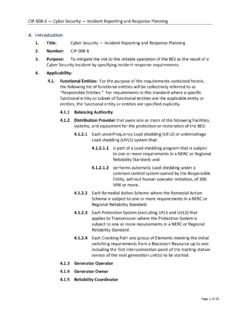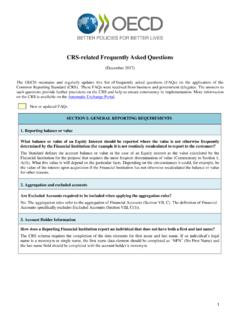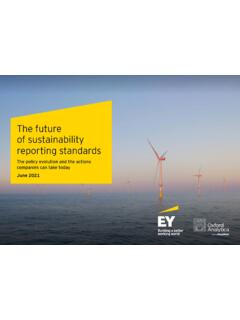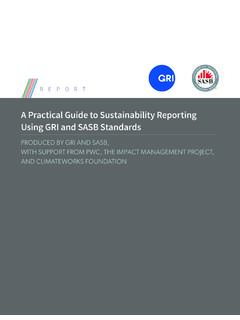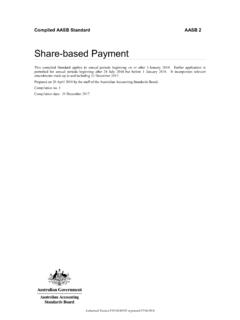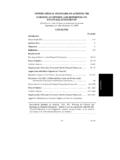Transcription of REVIEW OF DONOR REPORTING REQUIREMENTS ACROSS …
1 JIU/REP/2017/7. REVIEW OF DONOR REPORTING REQUIREMENTS . ACROSS THE UNITED NATIONS SYSTEM. Prepared by Gopinathan Achamkulangare Gennady Tarasov Joint Inspection Unit Geneva 2017. United Nations JIU/REP/2017/7. Original: ENGLISH. REVIEW OF DONOR REPORTING REQUIREMENTS . ACROSS THE UNITED NATIONS SYSTEM. Prepared by Gopinathan Achamkulangare Gennady Tarasov Joint Inspection Unit United Nations, Geneva 2017. iii EXECUTIVE SUMMARY. REVIEW of DONOR REPORTING REQUIREMENTS ACROSS the United Nations system JIU/REP/2017/7. The rise in non-core or voluntary contributions and earmarking in the United Nations system over the past two decades has been dramatic, while core contributions have been stagnant or have declined in real terms. The proportion of voluntary contributions was about 85 per cent in 2015 (exclusive of peacekeeping operations), with specified contributions reaching 64 per cent of the total.
2 United Nations funds and programmes rely solely on voluntary sources. Similarly, some secretariat bodies and other entities such as the Office for the Coordination of Humanitarian Affairs and the Office of the United Nations High Commissioner for Refugees rely on voluntary sources for more than 90 per cent of their funding. When transferring funds to the United Nations system, donors desire greater transparency and accountability and information on how these resources are used, as well as on measures being taken to ensure their effective and efficient use. Most donors demand detailed individual DONOR reports, both financial and programmatic, on the activities undertaken utilizing their earmarked contributions, which are often tied to specific projects or programmes. This DONOR -specific REPORTING is outside, and in addition to, the organization's corporate REPORTING to its governing bodies.
3 Donors stipulate specific REPORTING REQUIREMENTS that, in most cases, vary significantly among them in terms of format, detail and periodicity. The increase in specified contributions and earmarking has resulted in a major rise in the number of specific reports required by donors. The number of such reports required annually often runs into the hundreds and even thousands for many organizations. Considerable time and staff resources are expended by organizations to produce such large numbers of reports. In addition to these customized programmatic and financial reports, organizations are obliged to provide information and supporting documentation, often going beyond the agreed formats and frequency, and to respond to ad hoc or informal REPORTING or information requests not provided for in the agreements. The present Joint Inspection Unit (JIU) report identifies ways to improve DONOR REPORTING , better address DONOR needs and REQUIREMENTS , and enhance the standing of the United Nations system as a responsive and valuable partner for donors.
4 It explores possibilities for standardization and streamlining, including developing a common REPORTING format/template. The report contains seven formal recommendations, of which two are addressed to the governing bodies and five to the executive heads. It also includes 15 informal or soft . recommendations as additional suggestions to both the organizations and the donors for effecting improvements. Observations and findings In addition to REPORTING to Governments, many organizations provide a large number of reports to a variety of donors, including non-governmental donors, such as the European Commission, multilateral development banks, global vertical funds ( the Global Fund and the Green Climate Fund), United Nations inter-agency pooled funds ( the United Nations Multi-Partner Trust Fund and the Central Emergency Response Fund), and private donors (such as foundations).
5 Iv These individual DONOR reports are produced in multiple, often significantly differing, formats in response to specific needs of the respective donors, who have their own REQUIREMENTS and conditions with regard to frequency, format, level of detail and financial or budget structure. Providing such a multitude of individual reports and maintaining all the necessary underlying systems for these reports leads to additional transaction costs compared with regular REPORTING to the governing bodies. In addressing the challenges resulting from DONOR REPORTING , the present report recommends that organizations should engage with donors in a dialogue at the strategic level in line with the Secretary-General's proposal for a funding compact . In the spirit of partnership, views of both organizations and donors should be taken into account, notably donors' expectations for greater effectiveness, transparency and accountability regarding system-wide results.
6 One of the critical elements of the dialogue should be the adoption of DONOR report templates and accommodation of the common information needs and REQUIREMENTS of donors and the regulatory frameworks and capacities of the organizations. Pooled funds or other innovative funding sources should continue to be explored. Ideally, agreement with all donors would be most advantageous. However, success even with some key donors has the potential to significantly reduce the REPORTING burden. The United Nations System Chief Executives Board for Coordination should provide the platform for the development of such a unified position in the United Nations system (recommendation 1). DONOR REPORTING REQUIREMENTS are determined by the provisions in the respective contribution agreement and related documents. Negotiations, therefore, play a key role in clarifying DONOR REPORTING REQUIREMENTS and ensuring that DONOR needs are spelled out in the agreements.
7 Organizations and donors should discuss, at the outset, and agree on needs and REQUIREMENTS , their feasibility and the attendant resource implications. Similarly, there should be an agreement on ad hoc information and REPORTING requests such as project site visits, DONOR meetings and briefings. Organizations should ensure that the relevant offices, notably finance and legal, are consulted in a timely manner, so that the REPORTING REQUIREMENTS agreed upon are compliant with rules, regulations and policies. Clarity on REPORTING REQUIREMENTS will help avoid protracted discussions, ambiguity and grievances at a later stage (recommendation 2). A number of organizations do not have a central repository for all contribution agreements signed with donors. This may be the case in particular for decentralized organizations. The situation is exacerbated by the fact that fundraising and REPORTING activities are increasingly taking place at the regional and country levels.
8 Executive heads should encourage better access to, dissemination and exchange of information concerning DONOR REPORTING among the member States, and they should ensure that every organization maintains a corporate repository for all contribution agreements and DONOR reports (recommendation 3). Appropriate guidance and training on DONOR REPORTING will foster compliance with the organization's rules and provisions and assure uniformity of REPORTING conditions accepted ACROSS the organization and, hence, consistency in REPORTING (recommendation 4). DONOR REPORTING on small contributions is proportionately costlier. Defining a minimum threshold for contributions below which only standard REPORTING would be provided, together with methodologies for calculating REPORTING costs, would support the principle of full cost recovery and foster consistency within an organization.
9 Having an adequate level of resources for individual reports will help assure the quality and timeliness of DONOR REPORTING (recommendation 5). v Several organizations have developed standard report templates for government and non- governmental donors or a DONOR -specific standard template that is negotiated between the organization and a DONOR . Some efforts have been made towards harmonizing and standardizing DONOR REPORTING among multiple organizations and donors, including common standard REPORTING of pooled funds, REPORTING on thematic or loosely earmarked multi- DONOR funded projects/programmes, and the United Nations template for inter-agency funding. A. recent effort exploring the possibility of a common report template ACROSS the United Nations system, intended for use by all or many donors, has led to the development of the 8+3 common report template in the context of the Grand Bargain on humanitarian financing.
10 Notwithstanding the variations of REPORTING practices ACROSS donors, there is significant commonality in the information requested by them. Attempts should be made, based on the work done, to develop a minimum core report format that is agreeable to all organizations and covers their key common information/ REPORTING needs, and flexible enough that it can be adapted to the varying REQUIREMENTS of donors and entities (recommendation 6). Managing project-based and hard-earmarked funding requires policies and systems that support such operations, including DONOR REPORTING . To this end, and with a view to improving the quality and timeliness of DONOR REPORTING , organizations should ensure that their policies for the management of voluntary contributions are adequate, that they possess robust project management systems, and that their enterprise resource planning system and other management information systems possess the necessary functionalities for such work.





